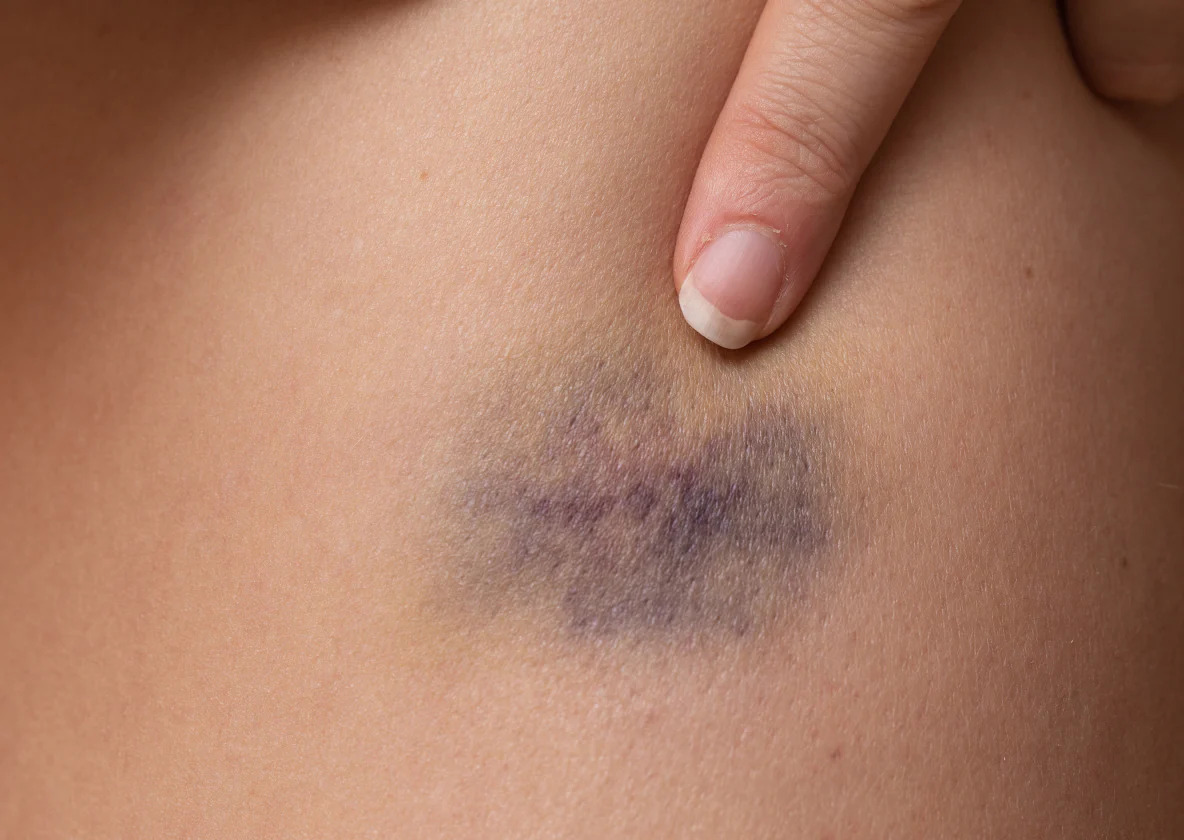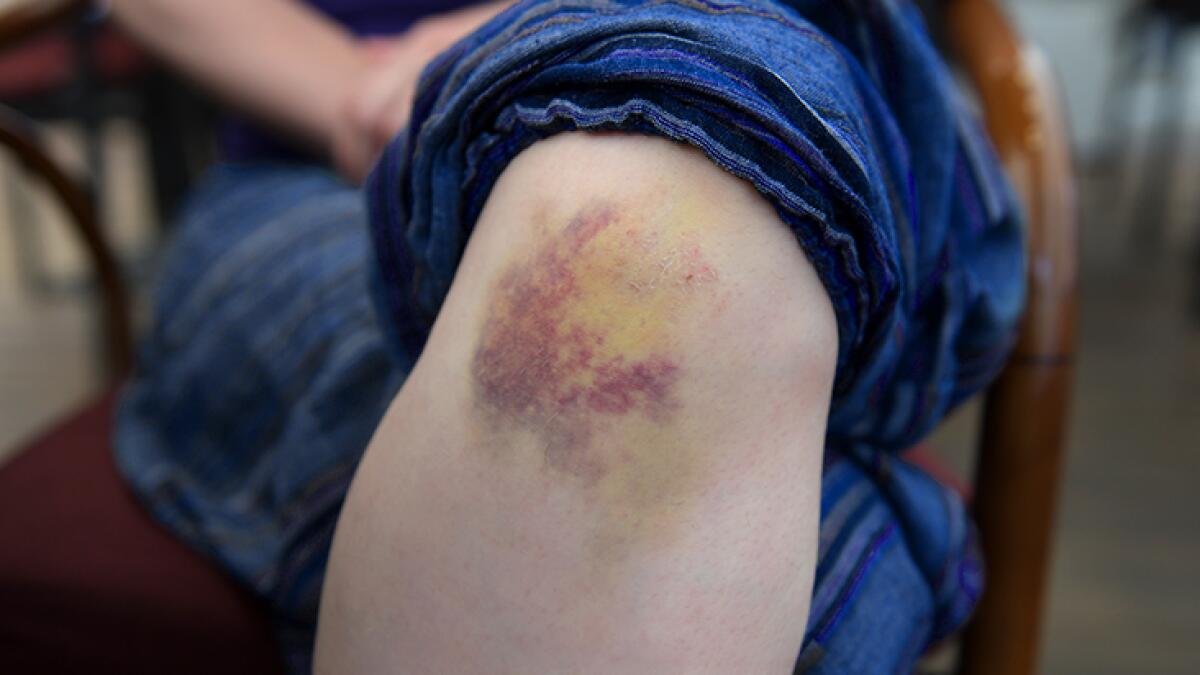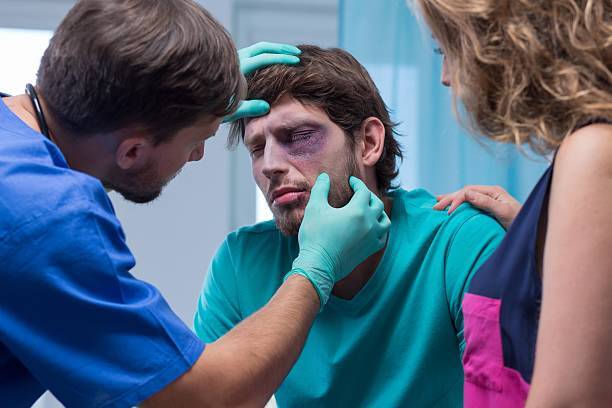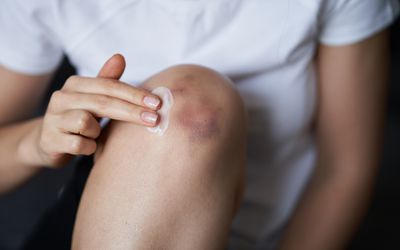Have you ever woke up one day and found a strange patch of colours on your skin or a new bruise and ask, ‘where did this come from?'
Have you ever hear of the term “ecchymosis” and say to your self, ‘this must be a fancy way of saying,bruise?'
Bruises are part of life and yet, they never seem to provide a straightforward answer. What causes this variation of coloration? More precisely, people may be wondering why some bruises stay sore for a longer time while others heal much faster? And lastly, when should one get worried about a bruise that seems not to heal?
In this blog, I will reveal the little-known facts about ecchymosis, making it possible for you to grasp what leads to the formation of these marks, and how they look like in contrast with other skin discolorations, in addition to sharing with you some of the ways to manage or get rid of the marks. If you are the person who tends to bruise often or simply want to know about why and how these changes in skin occurs, carry on to read more and learn all about it about ecchymosis.
What is Ecchymosis?

More specifically, ecchymosis is a term used by medics to refer to this particular type of a bruise. While small injuries leading to development of petechiae or purpura would be as a result of a minor injury while getting bruised, ecchymosis is usually large and develops after major injury has occurred. It is a condition whereby blood vessels especially capillaries are damaged and blood is released into the surrounding tissue. This leakage causes the skin to show some form of loss of color- from bluish purple, green and yellow as the body repairs itself.
However, is there any way that we can tell that it is ecchymosis as opposed to just another bruise? The main difference can be defined by the scale and its origins. Although all bruises mean that there is broken skin as well as blood vessel rupture and collection of blood under it, ecchymosis is generally large and can occur from variety of causes or even from medical disorders of clotting.
Causes of Ecchymosis

Hematomas may be caused by many factors, which you are hardly aware of. Here are some common causes:Here are some common causes:
1. Trauma or Injury:
Ecchymosis has a simple cause and that is trauma; this is usually in the form of physical injury. This could be anything from a fall to a direct blow to the body, which results to pressure on the capillaries,leading to the brusing of an area leading to the formation of a Bruise.
2. Medical Conditions:
Some of the risk factors for development of ecchymosis include certain disease states such as hemophilia or any other clotting disorders. These conditions cause loss of blood clotting ability hence resulting in massive and frequent bruising.
3. Medications:
There are some treatments that make the formation of ecchymosis more probable like the use of blood thinners such as aspirin or warfarin. These drugs thin out the blood so as to allow for easier formation of bruises or as commonly referred to as hematomas.
4. Aging:
With age skin loses its elasticity and also the blood vessels become more fragile and that is why ageing people get bruises easily. One of the most common complaints is that older people develop bruises with more ease and they also take long to heal.
5. Nutritional Deficiencies:
Some of the vitamins which may cause reduced blood vessels elasticity and, therefore, increased tendency to develop ecchymosis include Vitamin C or K. These vitamins are important in the proper functioning of our blood vessels and in coagulation of the blood.
The Science Behind the Colors of a Bruise

Still on the features of ecchymosis, one cannot fail to appreciate the colour changes that the bruise undergoes as it heals. It is common, and if you have ever questioned why a bruise is purple the first day, green the next day and yellow the following day before it disappears the reason is due to the body.
The colour changes are due to as your body metabolizes an iron compound, hemoglobin, which is a component of blood that transports oxygen. When the blood first begins to ooze out of the capillaries, it is red or purple owing to the presence of oxygenated hemoglobin. The different components of the extract interact with the hemoglobin and when it degrades to biliverdin and bilirubin the bruise turns green and later yellowish or brown when these compounds degrade further.
This is an expected process in the healing and usually it takes approximately one to two weeks to be through. That being said, if one sees that a bruise is healing for longer than this duration, or it is getting even more sore or puffy, then it may be good to see a doctor.
How to Treat Ecchymosis

It is however important to note that ecchymosis is not a very serious condition and one can always treat it from home provided the bruise pops up without any apparent reason. Here are some steps you can take to speed up the healing process:Here are some steps you can take to speed up the healing process:
Rest and Elevation:
If this is the case then the limb should be raised in order to minimize the accumulation of blood beneath the skin’s surface. Another way to minimize the injury is to avoid putting weight on the injured area when standing or sitting, among others.
Cold Compresses:
Supposing you get a bruise, you should apply a cold pack on the bruise immediately to cause the bruises to be small in size and relieves the pain. This is due to the fact that the cold makes the blood vessels to narrow, thus limiting the amount of blood to the certain part.
Heat Therapy:
In the night after the first two days, warm compresses can be applied to bring blood flow to the affected area thus bringing healing and reducing stiffness.
Over-the-Counter Pain Relief:
If the bruise is painful, you can use painkillers such as paracetamol, ibuprofen or aspirin among others. However, it is recommended not to take aspirin at all, because it leads to blood thinning and consequently, the worsening of the state of the injured area with the appearance of a bruise.
Topical Treatments:
Another regular agent used in the treatment and prevention of bruising is arnica gel which is regarded as a homeopathic remedies. Further, when applied topically as a vitamin K cream it can assist to firm the walls of the blood vessels and decrease the occurrence of bruising.
What are the signs that warrant a Doctor’s Appointment?

Most cases of ecchymosis are minor and can heal without medical intervention but there are conditions that call for medical attention. You should see a doctor if:
About this bruise, there is little which can be said as it comes out of nowhere with no apparent injurious cause behind it.
1. It has become very swollen or it feels very painful even to touch.
2. You easily fall or you have many cuts and bruises for which you can see no reason.
3. The bruise does not recover in the prescribed two weeks timeframe.
4. You have features such as fever, dizziness or if you develop abnormal bleeding or blood clots in other parts of the body.
Such might be signs that there is an ailment that should be treated in order to enable body to respond to other forms of medication.
Preventing Ecchymosis

Although some factors, like aging or medical conditions, can make it difficult to prevent ecchymosis entirely, there are steps you can take to reduce your risk:
Protective Gear:
In case you have a job that exposes you to dangers of getting injured, then wearing protective gear goes a long way in preventing getting bruises if you happen to engage in contact sports for example.
Healthy Diet:
Make sure that you take foods that are rich in Vitamin C and K to help the body in achieving good blood vessels and blood clotting.
Be Mindful of Medications:
If you take anticoagulant medications such as blood thinner consult with your doctor on how to prevent bruising. Some recommendations can involve changes in dosage or other tips that you may not be aware of concerning the occurrence of bruises.
Stay Active:
This can be explained by the fact that a non-stop exercise can enhance the circulation and strengthen the skin and its blood vessels hence reduce the likelihood of having a bruise.
For more such related content, don't forget to check out our content on Skincare Blogs.
Conclusion
Some people may confuse ecchymosis as being a mere translation of a bruise But you will be surprised that the knowledge of how the skin discoloration occurs can help in preventing it. It does not matter if it is a tiny spot that appeared as a result of a small knock or if it is a larger area of discoloration from a more severe injury because understanding how this type of bruising develops and as it goes through the healing process will allow you to make the necessary measures for the benefit of your health. The next time you wake up with a mysterious bruise you will not only understand what is going on in the skin layer but also how to address it.
